Lizards in Alabama are a diverse group, with around 16 species calling the state home. From woodlands to urban areas, lizards have adapted to various habitats across the state. Some species are commonly sighted, while others are rare to encounter.
Lizards’ behavior and appearance provide clues for identification, revealing the astonishing diversity yet intriguing similarities among these reptiles. This article delves into the intriguing world of Alabama’s lizards, providing insights into each species you may encounter.
Table of Contents
Lizards in Alabama
Anguidae
1. Eastern Slender Glass Lizard

- Experience Level: Intermediate
- Family: Anguidae
- Scientific Name: Ophisaurus attenuatus longicaudus
- Other Names: n/a
- Adult Size: 22 to 46 in. (55.88 to 116.84 cm.)
- Lifespan: 10 to 30 years
- Average Price Range: $50
Eastern slender glass lizards are found across Alabama, but are a very rare species to come across. This lizard lives in dry grasslands, and open woodlands. They regularly hide in burrows. Summer is when this species mates, and they lay up to 17 eggs, placing them in secluded areas.
Eastern slender glass lizards are one of the largest lizards in Alabama, but these species have no legs, and the body of a snake. This lizard has tan, brown, or olive coloring, with stripes on their sides. Unlike snakes this species has external ear holes, with blinkable eyelids.
Small invertebrates like insects, spiders, and small rodents are what this species eats. They are not able to open their mouths as large as a snake, and can only eat animals that fit into their mouths.
2. Mimic Glass Lizard
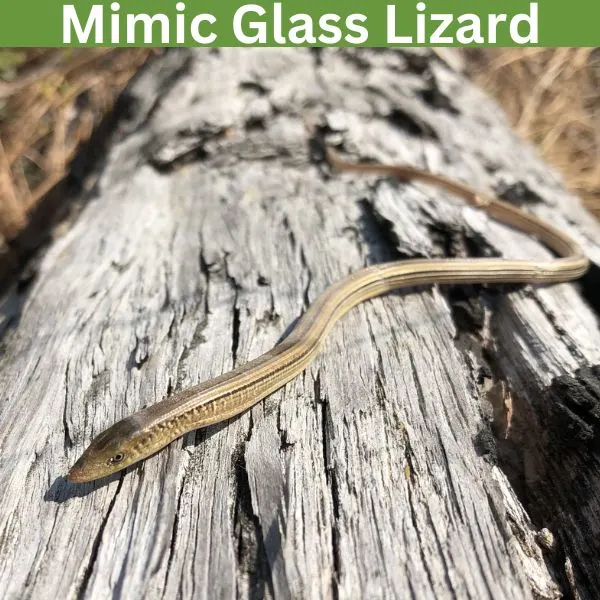
- Experience Level: Intermediate
- Family: Anguidae
- Scientific Name: Ophisaurus mimicus
- Other Names: n/a
- Adult Size: 15 to 26 in. (38 to 66 cm.)
- Lifespan: 10 to 30 years
- Average Price Range: $50
The mimic glass lizard is a species native to Alabama, and is found in the southern portion of the state. Dry habitats with longleaf pines are where this species lives. They are active in the day, often found hiding in burrows, or objects like woodpiles.
Mimic glass lizards are one of the smallest glass lizards in Alabama. This species has a body that resembles a snake, with tan, brown, or black coloring. This species may have stripes, or spots on them.
Insects are mainly what this lizard eats, but they also feed on other invertebrates. Mimic glass lizards are more common in moist environments, and in the winter they are not seen. This lizard is very rare in Alabama, only found in three counties.
3. Eastern Glass Lizard
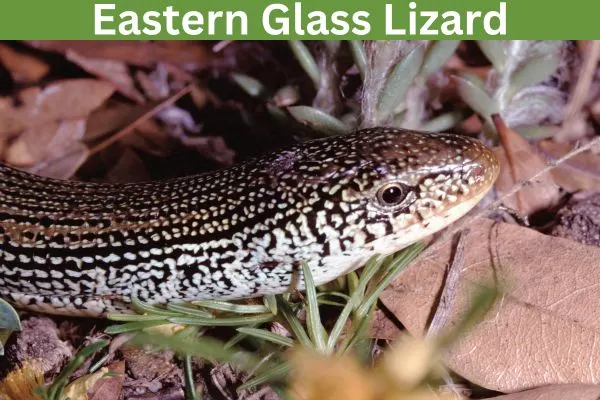
- Experience Level: Intermediate
- Family: Anguidae
- Scientific Name: Ophisaurus ventralis
- Other Names: n/a
- Adult Size: 18 to 43 in. (46 to 108 cm.)
- Lifespan: 10 to 30 years
- Average Price Range: $50
Eastern glass lizards are a species of legless lizards found in Alabama, mostly discovered in the Coastal Plains, Blue Ridge, Piedmont, and Valley areas of the state. This species lives in wet grasslands, and woodland habitats. When not active this species will burrow underground.
Eastern glass lizards have a long and heavy body. They have greenish or yellowish coloring with dark markings on them. Their scales are smooth, and grooves appear on this lizard side.
Eastern glass lizards do not have flexible jaws like snakes, only eating what can fit into their mouth. Insects, smaller lizards, amphibians, and spiders are some of the prey this lizard eats. Skunks, foxes, larger snakes, and cats are what eat this lizard. The summer is when this lizard breeds, laying up to 15 eggs.
Phrynosomatidae
4. Eastern Fence Lizard
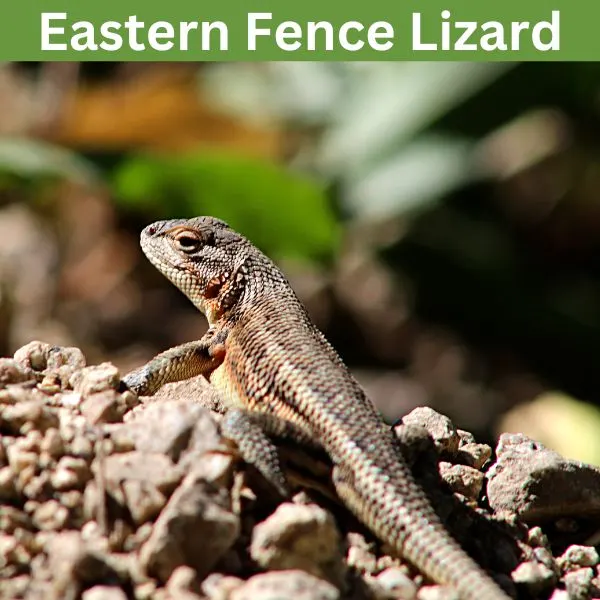
- Experience Level: Intermediate
- Family: Phrynosomatidae
- Scientific Name: Sceloporus undulatus
- Other Names: Prairie lizard, fence swift, pine lizard, gray lizard
- Adult Size: 4 to 7.25 in. (10.16 to 18.41 cm.)
- Lifespan: 4 years
- Average Price Range: $20
Forests, open woodlands, rocky areas, and urban places are habitats the eastern fence lizards live in. The southeastern United States is where this lizard is native to, and they are found across Alabama. Eastern fence lizards are active in the day, and enjoy climbing on things like trees, or fences.
Gray to brown are the color that this lizard lives in. They have roughly keeled scales, with dark lines running down their back. Eastern fence lizards have white bellies with black specks on them. The underside of this species sometimes has bluish coloring.
Eastern fence lizards are active most in the morning, and may be seen basking on rocks, or large fences. At night this species hides in burrows, or under objects like woodpiles. Eastern fence lizards are a very common species, and they are very hardy, even able to be frozen and survive.
5. Texas Horned Lizard
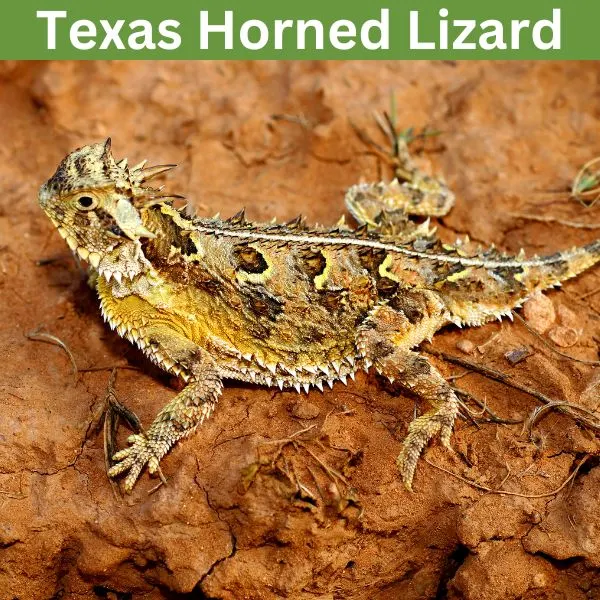
- Experience Level: Advanced
- Family: Phrynosomatidae
- Scientific Name: Phrynosoma cornutum
- Other Names: Horny Toad
- Adult Size: 3.7 to 5 in. (9.93 ot 12.7 cm.)
- Lifespan: 5 years
- Average Price Range: $40
Texas horned lizards is native from Louisiana to Arizona in the southeastern United States, and are a species that has been introduced to states like Alabama. This species in Alabama has been sighted near the coast. Texas horned lizards live in desert, and semi-arid rocky habitats.
This lizard gets its name from its horny appearance, and spikes are the largest on their head. Tan, reddish brown, and gray are the colors this species appears in. They have a flat, and round body, with dark spots sometimes appearing on them.
Texas horned lizards feed mainly on ants, but sometimes feed on other insects. This lizard may hide in a burrow, and they are typically seen in the day. When mating in the spring this species can lay up to 37 eggs. Texas horned lizards use their spines, and camouflage to protect themselves from predators.
Dactyloidae
6. Northern Green Anole
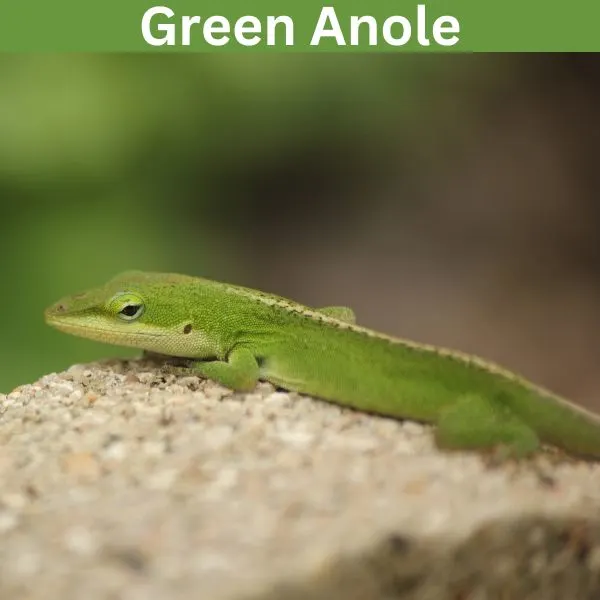
- Experience Level: Beginner
- Family: Dactyloidae
- Scientific Name: Anolis carolinensis
- Other Names: American anole, Red-throated anole
- Adult Size: 5 to 8 in. (12.7 to 20.32 cm.)
- Lifespan: 5 to 8 years
- Average Price Range: $10
Green anoles are native to the southeastern United States. This species is found in gardens, woodlands, and other habitats with lots of shade, and green vegetation. This species is territorial, and is active during the day. During the breeding season males become aggressive with each other, and compete for a mate.
This lizard is named after its green coloring, but they are also the only native lizard in the state capable of changing its coloring. This lizard can change its shade from brown to green. They have large heads, with thick bodies, and long tails. The chin of this lizard has a dewlap, which has reddish coloring.
Northern green anoles are active most from the spring to fall. This lizard feeds on insects, spiders, and even eats plant material like seeds. Larger lizards, and cats are the predators that prey on green anoles.
7. Brown Anole
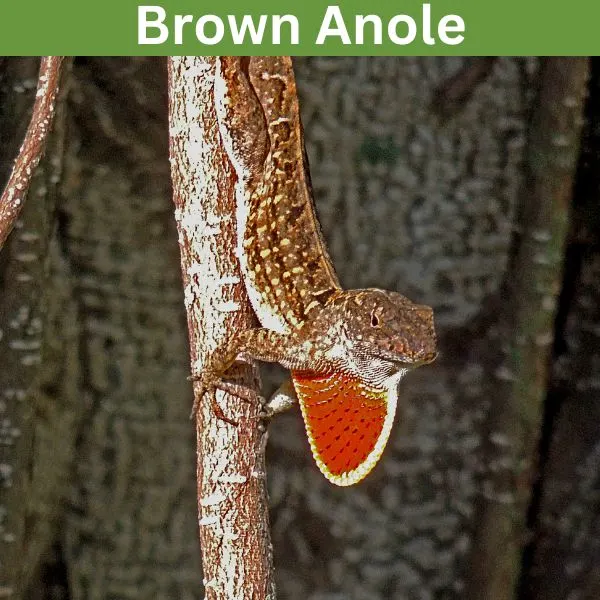
- Experience Level: Beginner
- Family: Dactyloidae
- Scientific Name: Anolis sagrei
- Other Names: Bahaman Anole, Cuban Brown Anole
- Adult Size: 5 to 9 in. (12 to 22.86 cm)
- Lifespan: 5 years
- Average Price Range: $10
The brown anole is an invasive lizard, originally from Cuba and the Bahamas. Brown anoles are very invasive, and often compete, sometimes hybridizing with green anoles. This species is found in sub-tropical, and humid environments. They are often less arboreal than the green anole.
Brown anoles are named after their tan coloring, but may also look gray. This species has a dewlap under their chin, which is reddish. Brown anoles have whitish, or yellow specks on their body. They have smaller heads than the green anole.
Spiders, crickets, ants, and roaches are some prey this lizard eats. They are preyed on by birds, larger lizards, snakes, and even other anoles. This species is believed to have been brought to the United States by traveling on cargo ships.
Scincidae
8. Mole Skink
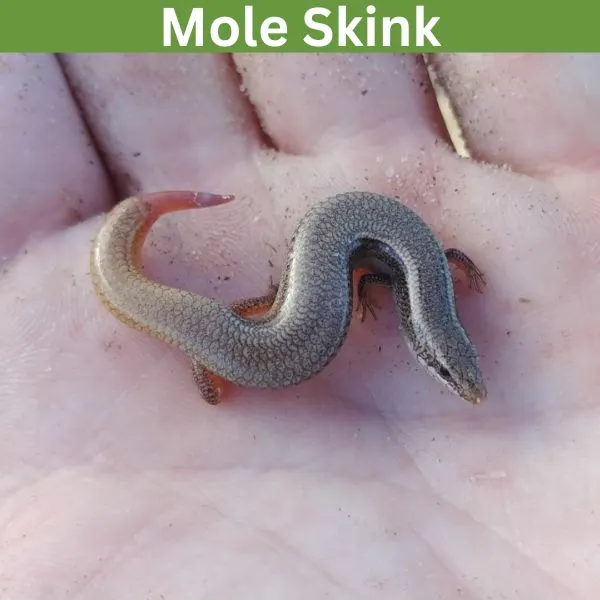
- Experience Level: Intermediate
- Family: Scincidae
- Scientific Name: Plestiodon egregius
- Other Names: n/a
- Adult Size: 3.5 to 6 in. (9 to 15 cm.)
- Lifespan: n/a
- Average Price Range: n/a
The mole skink is one of the several skink species that lives in Alabama. This lizard is very secretive, and spends lots of their time underground. This species is found in the coastal plains in the southeastern United States, and are found in the central region of Alabama.
Mole skinks have brownish, to black coloring. When born this species may have blue tails, which turns pinkish to red with age. This species has very small limbs, with a slender body. In the breeding season they have orange markings on their side.
Roaches, spiders, and crickets are some of the invertebrates this lizard eats. They are not very common, and spend the majority of their lives underground like moles.
9. Five-lined Skink
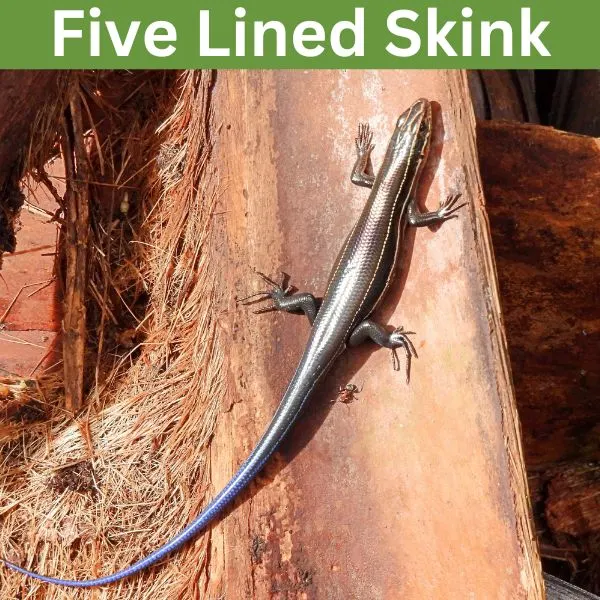
- Experience Level: Intermediate
- Family: Scincidae
- Scientific Name: Plestiodon fasciatus
- Other Names: American five-lined skink
- Adult Size: 4.9 to 8.5 in. (12.5 to 21.5 cm)
- Lifespan: 6 years
- Average Price Range: $12
The five-lined skink is found across the eastern United States, and is seen across Alabama. This species is found near water sources like streams, and rivers. They live in habitats like woodlands, and deciduous areas. Under logs, rocks, and thick vegetation is where this species is often found.
The five-lined skink is a medium-sized lizard, named after the five lines that run down their body. This species has yellowish, or white stripes on them. Their bodies are olive, tan, or black. When born the five-lined skink may have a blue tail, which fades with age. In the breeding season this lizard may have reddish coloring around their face.
Five-lined skinks are active from the spring to fall, and mate during this period. Females lay up to 6 eggs, placing them in secluded nests, in areas like under moist logs. Five-lined skinks are preyed on by animals like hawks, snakes, shrews, and raccoons. They use their speed to escape, but can also disconnect their tails, and regrow them back.
10. Broad-headed Skink

- Experience Level: Intermediate
- Family: Scincidae
- Scientific Name: Plestiodon laticeps
- Other Names: Broadhead Skink, Red-headed Scorpion
- Adult Size: 5.9 to 13 in. (15 to 33 cm.)
- Lifespan: 4 to 8 years
- Average Price Range: n/a
Broad-headed skinks are found all across Alabama. This lizard’s native range lies in the southeastern United States. Broad-headed skinks are a semi-arboreal species. They are found in woodland habitats, preferring places with lots of trees. This species is one of the most arboreal skinks in North America. Active in the day, you can find them on dead, or decaying trees.
Broad-headed skinks are also one of the largest skinks in their range, and males have large, broad heads. This species has brown, or olive coloring, with stripes sometimes appearing on the female back. This species has smooth scales, with a flat appearance. Males may have reddish heads in the breeding season, and their underside is a plain white, or cream color.
This species is active most from the spring to fall months. Males of this species are larger, but the larger the female is the more eggs they are capable of laying. This species is able to lay up to 22 eggs. While this lizard may be bright colored, they are harmless to humans.
11. Little Brown Skink
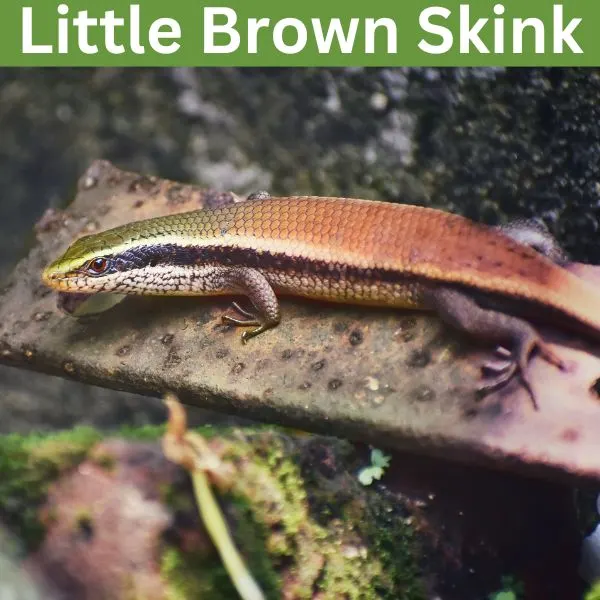
- Experience Level: Beginner
- Family: Scincidae
- Scientific Name: Scincella lateralis
- Other Names: Ground Skink, Brown-backed Skink
- Adult Size: 3 to 5.25 in. (7.62 to 13.3 cm.)
- Lifespan: 2.5 years
- Average Price Range: $5
The little brown skink is native to the southeastern United States, and this lizard is found all across Alabama. Little brown skinks are found near streams, ponds, and other water sources. Deciduous, and coniferous forests are where this lizard lives, and they are a fossorial species. Little brown skinks are fossorial, spend their lives underground, or in leaf litter.
This lizard is one of the smallest in North America, and Alabama. They have very slender bodies, with small limbs. This species has a coppery brown coloring, with a yellow underside. Dark stripes appear on their sides, and they may have specks on them.
Little brown skinks feed on small insects, spiders, and other small animals like pill bugs. This species being very small is easily preyed on by animals like predatory birds, larger lizards, and snakes.
12. Coal Skink
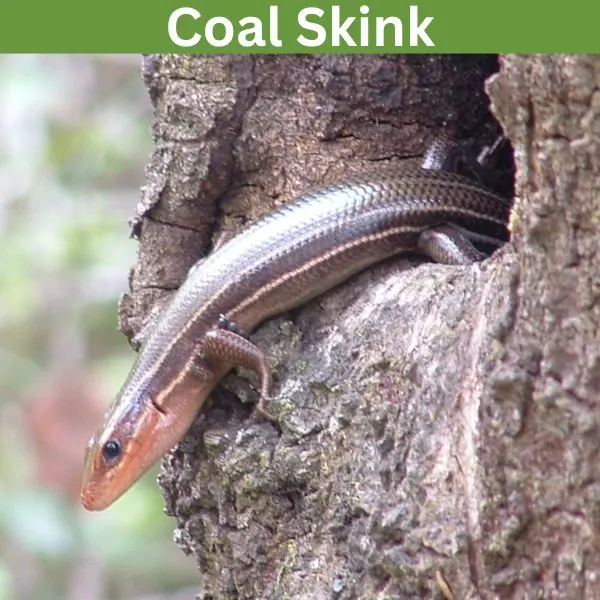
- Experience Level: Intermediate
- Family: Scincidae
- Scientific Name: Plestiodon anthracinus
- Other Names: n/a
- Adult Size: 5.1 to 7.1 in. (13 to 18 cm.)
- Lifespan: 6 years
- Average Price Range: n/a
Coal skinks have a scattered population across Alabama, and the eastern United States. This lizard lives near streams, in woodland habitats. Coal skinks hide under debris like rocks, logs, and other shelters. They hide under debris near streams, and if disturbed will dive into water.
Coal skinks are medium sized, with a slender body, and short legs. Coal skinks have stripes on their body, with males having reddishing coloring on their face during the breeding season.
This lizard is active from the spring to fall months, and lays around 9 eggs in a clutch during this season. When born like other skinks this species has blue tails, which can drop if a predator attacks them. Coal skinks have a stable population in their range, but are a very secretive species.
13. Southeastern Five-lined Skink
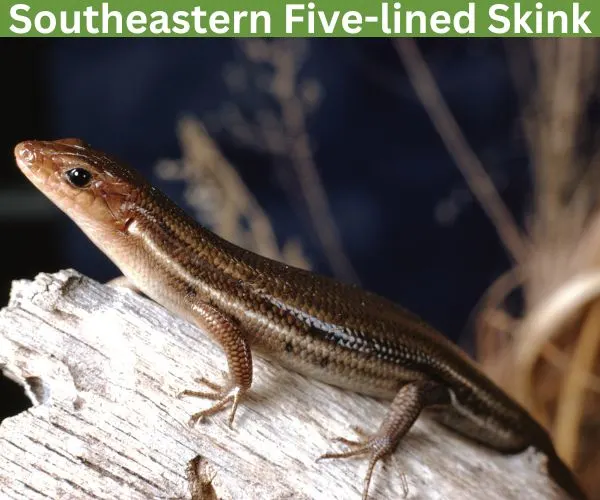
- Experience Level: Beginner
- Family: Scincidae
- Scientific Name: Plestiodon inexpectatus
- Other Names: n/a
- Adult Size: 5.5 to 8.5 in. (13.97 to 21.59 cm.)
- Lifespan: 6 years
- Average Price Range: n/a
Southeastern five-lined skinks are native to the southeastern United States, and are found in all of Alabama, but the northern portion of the state. This species lives in woodland habitats, common near freshwater areas with lots of vegetation. Southeastern five-lined skinks are active in the day, and are a terrestrial lizard.
This species is named after the five lines that run down their body, which become lighter with age. The middle stripe of this skink is typically thicker than the rest. When compared with the common five–lined skink this species is bigger, and has thinner stripes. Southeastern five-lined skinks have olive, tan, or brown coloring, and when born this lizard has a bright blue tail.
Insects like grasshoppers and beetles make up the majority of this species’ diet. They are sometimes kept as pets due to their hardy nature, and are even capable of living in dry habitats. Southeastern five-lined skinks are common in their range, and are seen most often in the spring and early summer months.
Teiidae
14. Eastern Six-lined Racerunner
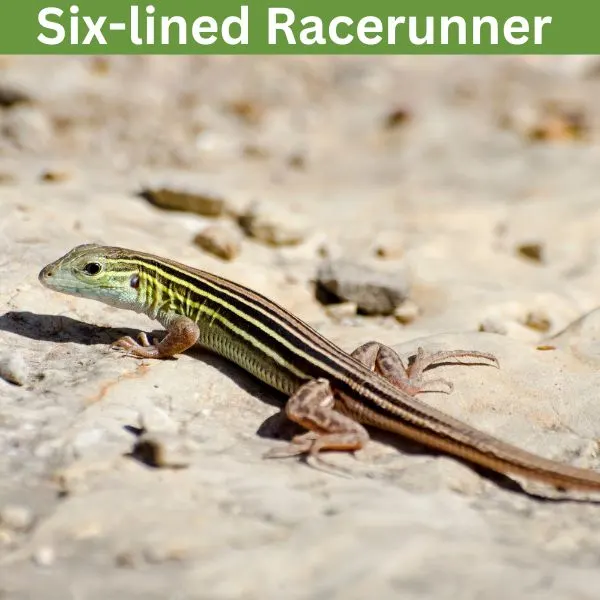
- Experience Level: Intermediate
- Family: Teiidae
- Scientific Name: Aspidoscelis sexlineata sexlineata
- Other Names: Sandlapper lizard
- Adult Size: 6 to 9.5 in. (15 to 24 cm.)
- Lifespan: 4 to 5 years
- Average Price Range: $30
The eastern six-lined racerunner is a species that lives in the southeastern United States, and they are found in Alabama. This lizard lives in various habitats like grasslands, woodlands, and wetlands. They are found more near lower elevations, and prefer dry habitats. This species is active in the day, seen most often in the morning.
Eastern six-lined racerunners are named after the six stripes that run down their body. This species has yellowish, green, or orange stripes. They have an olive to black body, with a very long tail, and long toes. This species has a white underside, but males may have blue coloring on their belly.
Insects are mainly what this lizard feeds on, and they are seen until spring, to early summer. This lizard is very quick, using their speed to catch prey, or escape predators.
Gekkonidae
15. Mediterranean House Gecko
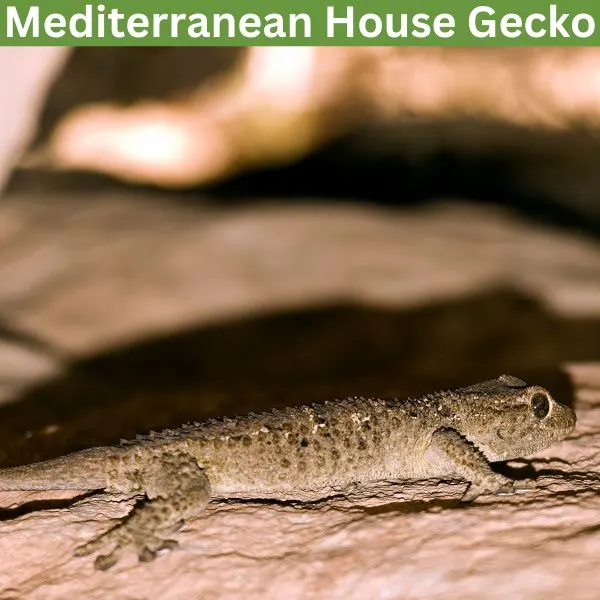
- Experience Level: Beginners
- Family: Gekkonidae
- Scientific Name: Hemidactylus turcicus
- Other Names: Moon Lizard, Turkish Gecko
- Adult Size: 4 to 5 in. (10 to 13 cm.)
- Lifespan: 3 to 9 years
- Average Price Range: $10
The Mediterranean house geckos are an invasive species to Alabama. These lizards are native to the Mediterranean region like their name suggests, and in Alabama they are mainly found in urban environments. This species is active at night, and in the day hides in a crevice.
Mediterranean house geckos have a tan to cream coloring, with very bumpy skin. They have toes on their feet to help them climb, with yellowish, elliptical eyes to give them good night vision. This lizard has dark bands on their tail, with spots on them.
Insects like moths, and crickets are what this lizard eats, and they are found near light sources, and other places with lots of insects. This lizard may make a chirping sound which sounds like a bird. Shipments from other regions is how this species has grown its range around the world.
16. Indo-Pacific Gecko

- Experience Level: Intermediate
- Family: Gekkonidae
- Scientific Name: Hemidactylus garnotii
- Other Names: Assam Greyish Brown Gecko
- Adult Size: 4 to 5 in. (10 to 13 cm)
- Lifespan: 5 years
- Average Price Range: n/a
The indo-pacific gecko is an invasive lizard that lives in Alabama. This species is native to Southeast Asia, but has been introduced to several regions around the globe. In Alabama this lizard has been sighted in the southern portion of the state. Urban, and suburban habitats are places where this species lives, found in places like houses or warehouses.
Indo-pacific geckos are a small species, with toe pads, and smooth skin. They have a gray to brownish coloring, but can turn to be translucent at night. The belly of this lizard is orange. Unlike other lizards this species lacks eyelids.
Insects are primarily what this gecko eats, and they do their hunting at night. When not active they may hide in the crevices of trees, or houses. This species is known for making noises which can warn others of predators, or attract a mate.
FAQ
What is the largest lizard species in Alabama?
The eastern slender glass lizard is the largest lizard in Alabama, and is capable of reaching up to 43 in. (108 cm.) in length. These lizards do not have legs, and resemble snakes, but unlike snakes have blinkable eyelids, and ear holes. Other lizards in Alabama include the broad-headed skink, and green anole.
Are there any invasive lizards in Alabama?
In Alabama lizards like the Mediterranean house gecko, and Indo-pacific gecko are invasive to the state. Alabama has around 12 lizard species that are native to the state. Invasive lizards can become an issue since they take resources, and land away from native animals.
Wrapping up
Lizards are amazing animals, with around 16 species that you may find in Alabama. There are many species of birds, snakes, and smaller mammals that rely on lizards for food. Lizards are also helpful in controlling the pest population of insects, and arthropods.
Learning about lizards may make you want to keep one as a pet, and while they can make great companions, some species may be more difficult than others. If you plan on keeping a lizard as a pet you should learn about species you are getting, and never get one from the wild.
Protecting the lizard species and habitats they live in are essential in maintaining an overall healthy ecosystem in Alabama. As you learn more about the specific lizards that inhabit the state it will be easier to spot, and identify the ones you come across in the wild.
Lizards in other states
